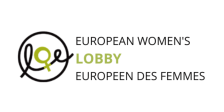Quotas needed to boost equality in Irish boardrooms, conference told
Published in the Irish Time, on the 2 May 2013
Quotas needed to boost equality in Irish boardrooms, conference told.
Ireland falls behind global average in number of women in senior management positions
Irish boardrooms could face more than a century of gender inequality unless quotas and initiatives to get women into senior management positions are put in place, according to a meeting held by the National Women’s Council of Ireland yesterday.
Calls for gender quotas come as the number of women in senior positions in Irish companies lags behind the global average.
The drive to get women into decision-making positions in business is growing as studies suggest companies with more diverse boards perform better and take fewer risks.
Calls for change at the top have also grown since the financial crisis when it was questioned if male-dominated boardrooms encouraged a culture of increased risk taking, contributing to the financial crisis.
Slow pace
The number of women on Irish boards, even in non-executive positions, has risen at a slow pace over the past decade.
European Women’s Lobby representative Serap Altinisik says, “The proportion of women on boards in Ireland has risen very gradually from just under 7 per cent in 2003 to around 9 per cent in 2012. This represents an average increase of just 0.12 percentage points per year; at this rate of change on non-executive boards, to reach at least 40 per cent would not be achieved for well over a century.”
Ireland is also behind the curve when it comes to the number of women in senior positions, according to research from Grant Thornton’s International Business Report.
Globally 24 per cent of management positions are held by women, however in Ireland that number falls to 21 per cent. On a worldwide basis, 19 per cent of board representation is made up of women; once again in Ireland that figure falls to 17 per cent, leaving the country in the bottom quartile when it comes to both measures.
National Women’s Council of Ireland director Orla O’Connor says, “The fact that there is such a low number of women on boards is part of the low representation of women at senior level in decision-making in Ireland. What you’re seeing is a wider reflection of women’s inequality within the workforce and it means we have to do other things within the workforce to have women who are ready to go on to boards . . . That’s why the National Women’s Council is saying we have to put a quota in place, this change is not going to occur naturally.”
The reason why women don’t make it into the boardroom is because many don’t remain in the workplace at an executive level, according to Media Training director and RTÉ board member Orlaith Carmody.
“In order for women to be visible and to be within the pool from which you’re going to be selected, you have to have emerged within the executive level. A lot of women have dropped out of the executive pool after mid-management level, they don’t make it as far as senior management level,” says Ms Carmody.
Research suggests the gender pay gap and childcare issues contribute to women failing to reach senior management levels.
In Ireland the gender pay gap stands at 4 per cent among the bottom 10 per cent of earners but that figure jumps to 24.6 per cent when it comes to the top 10 per cent of earners.
Lower pay
Lower pay for women and a lack of paternity leave in Ireland also contribute to women leaving the workforce.
According to figures from the Organisation for Cooperation and Development, Irish employment rates for women with three children are as low as 45.2 per cent.
“I believe there is a necessity for quotas . . . if we didn’t need quotas, already diversity would be much better than it is. Clearly it is still very poor and therefore we need to do something about it,” says Ms Carmody.




